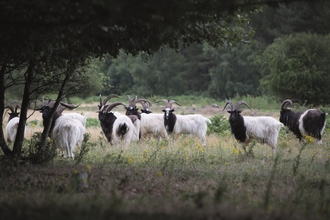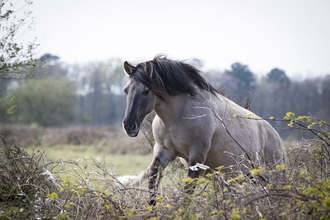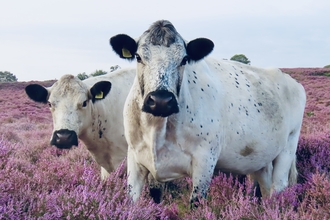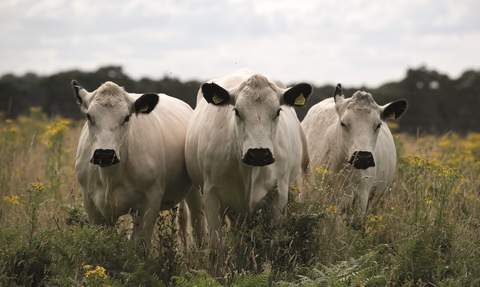
Grazing cows in the Brecks (credit: Jimmy King)
Conservation grazing
Grazing herbivores, such as cattle and ponies, have long helped shape the landscape we see in the British Isles today. Some of our most iconic landscapes and richest wildlife habitats owe their existence to the presence of these living lawnmowers!
At Norfolk Wildlife Trust we have a long history of using domestic livestock to help us manage our sites. Using the correct species of animal, in the right numbers and at the right time can manage habitats in a way that is almost impossible to achieve through other means.
The physical action of grazing, trampling of vegetation, dunging and disturbance of the soil create a rich mosaic of habitats that allow a wide range of species of plant, invertebrates, mammals and birds to make their home.
Our grazing species
Keeping our grazing livestock healthy and happy
Norfolk Wildlife Trust takes its responsibility for the health and welfare of our livestock seriously. Our animals need regular checking to remain fit and healthy and we provide staff, equipment and veterinary support to make this possible.
Each species we keep has a ‘health plan’ – a calendar of what they need and when. Prevention is better than cure of course and we proactively look after their needs using this plan. This includes twice annual ‘farrier days’ where an experienced farrier and vet look over all of the pony herds and trim any feet that need it. This helps to prevent lameness and mobility issues in the future.
The breeds we have chosen are hardy and require very little day-to-day care. Regular welfare checks are carried out by NWT staff and a dedicated team of livestock checking volunteers who report any problems to the team. With such a large number of animals spread around the county, volunteers play a really important part in looking after our animals.
The routine use of antibiotics and growth hormones is well documented and a sad consequence of industrial scale food production. Wormers and other parasite controlling medication can be very harmful to invertebrates and healthy soils, so our own approach to medication use follows organic principles, and we only use them as a treatment when needed, rather than unnecessarily medicating our animals on a permanent basis.
External graziers
We work with a number of farmers who supply animals to graze on many of our sites. This means that we can increase the amount of grazing on these sites when we want, usually in the summer, without having the responsibility of looking after the herd all year round.
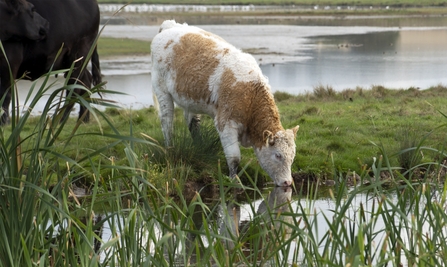
Cattle drinking at Cley (credit: Jimmy King)
At Cley & Salthouse Marshes we work with several local farmers who each turn out around 30 cattle in April. These cattle graze the fresh marshes, removing some of the annual growth and creating a mosaic of different length swards and providing the perfect conditions for waders such as lapwing, redshank and avocet to breed and rear their young.
The dunging from the cattle adds to the ecosystem, attracting in a wide range of insects that, in turn, provide food for birds and their growing chicks. The cattle are moved off the site in October, before it gets too wet.
No fence collars
The use of ‘no fence’ collars, where a virtual boundary drawn on an electronic map is linked to collars worn by livestock, has been used in the UK for several years now. This technology allows sites that can’t easily be fenced in the traditional way to be grazed. It also allows more targeted grazing within a site, for example keeping livestock out of wet areas or away from sensitive habitats or species.
In Norfolk we have trialed ‘no fence’ collars successfully on several sites. At Sweet Briar Marshes, our newest urban reserve in the centre of Norwich, six of our British White cattle wear the collars, allowing reserve staff to monitor their grazing efforts. The site has a solid boundary fence but the collars mean that we can adjust the areas within the fence that the cattle graze, depending on what best benefits wildlife.
The collars also help with welfare monitoring. Although there is no substitute for in-person checks, staff can see each of the cows in real time. If an animal strays over their virtual boundary an alert is sent, and we can see if any of the cows are separate from the herd.

